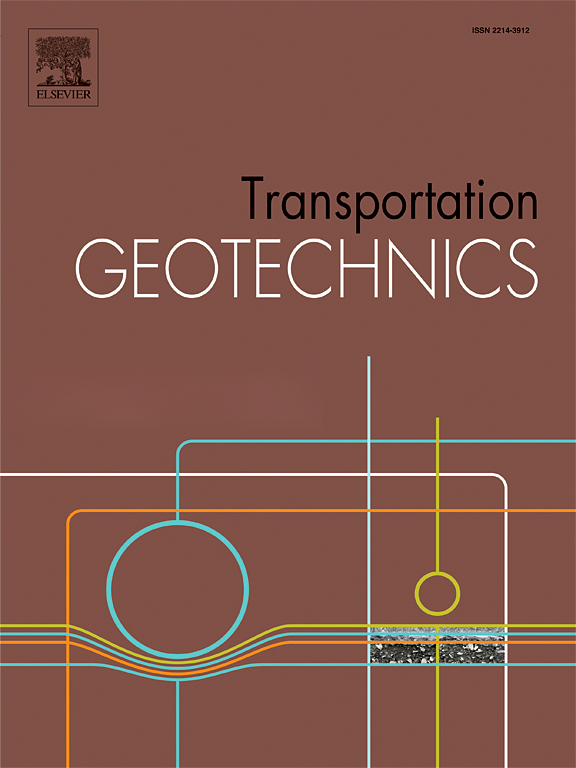Interface friction behavior between soil and steel considering offshore pile driving process by ring shear tests
IF 4.9
2区 工程技术
Q1 ENGINEERING, CIVIL
引用次数: 0
Abstract
Driven steel piles are commonly used in civil and offshore structures due to their high load-bearing capacity. The interface angle between steel piles and soils is a critical factor in determining pile foundation capacity. This study investigates the interface behavior between sand/clay soils and steel piles using ring shear tests, focusing on the impact of the Imperial College Pile (ICP) design method, which includes a driving impact simulation followed by slow testing. The results revealed that the fast-shearing stage recommended by the ICP method significantly affected the soil-steel interface behavior. Sand demonstrated varied responses based on relative density, with dilation occurring after fast shear due to particle redistribution. In contrast, clay exhibited consistent compaction. With a single slow shearing phase, the sand’s residual interface angle aligned with the CUR (2001) recommendation of 29 degrees, whereas with fast shearing pulses, higher angles were observed. For clay, the residual interface angle decreased with increasing confining pressure, regardless of the testing method, apparently due to changes in water content. These findings suggest that considering pile-driving effects by fast-shearing stage recommended by ICP method, is essential for accurate frictional behavior assessment in foundation design, especially for offshore structures.
求助全文
约1分钟内获得全文
求助全文
来源期刊

Transportation Geotechnics
Social Sciences-Transportation
CiteScore
8.10
自引率
11.30%
发文量
194
审稿时长
51 days
期刊介绍:
Transportation Geotechnics is a journal dedicated to publishing high-quality, theoretical, and applied papers that cover all facets of geotechnics for transportation infrastructure such as roads, highways, railways, underground railways, airfields, and waterways. The journal places a special emphasis on case studies that present original work relevant to the sustainable construction of transportation infrastructure. The scope of topics it addresses includes the geotechnical properties of geomaterials for sustainable and rational design and construction, the behavior of compacted and stabilized geomaterials, the use of geosynthetics and reinforcement in constructed layers and interlayers, ground improvement and slope stability for transportation infrastructures, compaction technology and management, maintenance technology, the impact of climate, embankments for highways and high-speed trains, transition zones, dredging, underwater geotechnics for infrastructure purposes, and the modeling of multi-layered structures and supporting ground under dynamic and repeated loads.
 求助内容:
求助内容: 应助结果提醒方式:
应助结果提醒方式:


